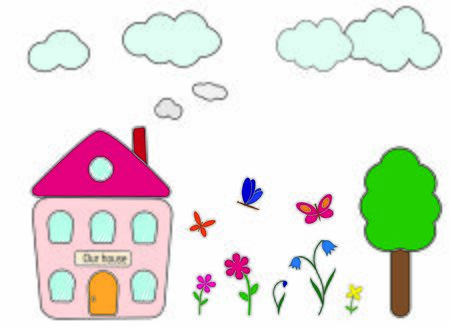Introduction: Urban Living Meets Rock Gardens
City life in America often means making the most of limited outdoor spaces. As urban homes get cozier and yards shrink, homeowners are looking for creative ways to bring nature into their daily lives. Enter rock gardens—a stylish, low-maintenance landscaping solution that’s perfectly suited for small urban yards. Rock gardens blend rugged natural beauty with modern city aesthetics, offering a fresh way to enjoy greenery without the hassle of traditional lawns or high-maintenance flower beds. Whether you’re working with a tiny backyard, a compact side yard, or even a sunny spot beside your driveway, rock gardens can transform these overlooked areas into eye-catching retreats. In this article, we’ll explore how rock gardens maximize space, add curb appeal, and create a calming oasis right in the heart of urban America.
Planning Your Small Space Rock Garden
When it comes to creating a rock garden in a compact urban yard, planning is everything. Urban homes often face space limitations, so making the most of every square foot is crucial. Here are some guidelines to help you assess your available space, optimize your layout, and choose the best location for your rock garden within an American city environment.
Guidelines for Assessing Available Space
Before you start hauling rocks, take time to evaluate your yard’s dimensions and unique features. Look for areas that receive ample sunlight, as most rock garden plants thrive in full or partial sun. Consider existing structures such as fences, patios, or even air conditioning units that might impact where you can build. Measure the area you’re considering and note any irregular shapes or slopes—they can actually add character to your design.
Optimizing Layout for Maximum Impact
With limited space, a smart layout can make your rock garden feel larger and more dynamic. Use levels and height variation by stacking stones or building small mounds to draw the eye upward and create depth. Curved lines and asymmetrical shapes help break up boxy yard boundaries, making your oasis feel organic and inviting. Below is a quick reference table to help you visualize different layout options:
| Layout Style | Best For | Space-Saving Tips |
|---|---|---|
| Tiered/Layered | Narrow side yards, sloped spaces | Use vertical planting on walls or steps |
| Circular/Island Bed | Central open spots | Create a focal point without blocking pathways |
| Corner Design | Unused corners of the yard | Makes dead space functional and visually appealing |
Choosing the Best Location in Urban Yards
The ideal spot for a rock garden depends on both practical needs and aesthetics. Choose an area with good drainage—rock gardens don’t like soggy soil. Proximity to outdoor living spaces like decks or patios lets you enjoy your garden up close, while placing it near windows brings nature into view even when indoors. Also consider how much maintenance each location will require—easy access makes upkeep simpler.
Quick Tips:
- Avoid low-lying spots that collect water after rainstorms.
- If privacy is needed, use taller rocks or plants as natural screens along property lines.
- South or west-facing locations get the most sunlight for drought-tolerant plants.
With careful planning tailored to your unique urban yard, a rock garden can become a standout feature—even in the smallest of American home spaces.

3. Selecting Rocks and Local Plants
When designing a rock garden for a small urban yard, choosing the right materials is key to creating a landscape that’s both beautiful and sustainable. Start by sourcing rocks that reflect your region’s natural geology—this not only grounds your space in its local context but can often save on transportation costs and environmental impact. Check out local stone suppliers, landscaping yards, or even community “rock swaps” where neighbors exchange materials. For a true American feel, consider flagstone in the Southwest, granite in New England, or river rocks in the Pacific Northwest.
When it comes to plants, prioritize native species and drought-tolerant varieties that are adapted to thrive in your city’s climate. Native grasses, succulents like sedum, and flowering perennials such as black-eyed Susan or blanket flower add texture and color without demanding constant care or excessive watering. Connect with your local extension office or native plant society for guidance on what grows best in your area—they’ll have tips specific to your urban microclimate.
To keep things low-maintenance and eco-friendly, arrange rocks and plants in layers that mimic natural outcroppings: place larger stones as anchors, then tuck smaller rocks around them to create crevices for planting. Don’t forget mulch—gravel or decomposed granite helps retain moisture and suppress weeds while enhancing the minimalist vibe typical of modern American yards. By focusing on regional materials and hardy native plants, you’ll create a rock garden that not only maximizes your small space but also celebrates the spirit of American urban living.
4. Design Ideas for Urban Aesthetics
When it comes to rock gardens in small urban yards, smart design is the key to both style and functionality. With limited outdoor space, every inch counts—so blending creative layouts with modern urban aesthetics is essential. Here are some innovative ideas to help you maximize your city homes outdoor area while making a bold statement.
Vertical Rock Gardens
One of the most effective ways to save space is to go vertical. By stacking rocks and incorporating vertical planters or wall-mounted pockets, you create a living wall effect that draws the eye upward. This not only adds height and dimension but also allows you to grow more plants without expanding your footprint.
Geometric Patterns and Minimalism
Modern urban homes often feature clean lines and geometric shapes. Reflect this style by arranging rocks in angular patterns or using square and rectangular planters with gravel or pebble accents. Stick to a neutral palette—think grays, whites, and blacks—for a sleek, contemporary vibe.
Multi-Functional Features
Maximize usability by integrating seating, storage, or pathways into your rock garden. For example, large flat stones can double as benches or stepping stones. Here’s a quick reference table for inspiration:
| Feature | Space-Saving Benefit | Urban Appeal |
|---|---|---|
| Built-in Benches | Seating without extra furniture | Sleek, integrated look |
| Pathways with Pebbles | Clever navigation through tight areas | Modern and inviting flow |
| Vertical Plant Walls | Adds greenery upward, not outward | Eye-catching focal point |
| Hidden Storage Rocks | Tidy up gardening tools out of sight | Clean, uncluttered aesthetic |
Xeriscaping and Native Plants
Incorporate drought-resistant native plants among your rocks for low-maintenance beauty that fits perfectly with American urban climates—think succulents, ornamental grasses, and hardy perennials. These choices not only conserve water but also support local pollinators and wildlife.
No matter how limited your space, these design concepts can turn even the tiniest yard or city balcony into a stylish oasis that complements modern American living.
5. Sustainable and Low-Maintenance Benefits
Rock gardens are a perfect fit for urban American homes, especially for those with small yards who value sustainability and simplicity. In today’s fast-paced city lifestyle, not everyone has the time or resources to maintain a traditional lawn or garden. Rock gardens offer an eco-friendly alternative that helps conserve water—a crucial benefit in many U.S. cities facing droughts or water restrictions. By using drought-tolerant plants like succulents, sedum, and native grasses, these gardens require far less watering than lawns or flower beds.
Another major advantage of rock gardens is their low-maintenance nature. Once your rock garden is established, you’ll spend much less time mowing, pruning, and weeding. The rocks themselves act as a natural barrier against weeds, reducing the need for chemical herbicides or frequent manual upkeep. This not only saves you valuable weekend hours but also keeps your outdoor space healthier for kids and pets.
Moreover, rock gardens are incredibly resilient to weather changes and urban pollutants. Rocks don’t fade or deteriorate easily, so your yard remains attractive year-round with minimal effort. For environmentally conscious city dwellers, choosing locally sourced stones and native plants further reduces your carbon footprint while supporting local businesses.
In summary, rock gardens bring sustainable beauty to small urban spaces by conserving water, minimizing maintenance chores, and providing a green retreat that fits seamlessly into the busy rhythm of American city life.
6. Seasonal Care and DIY Tips
Keeping Your Rock Garden Beautiful Year-Round
American seasons can be unpredictable, especially in urban settings where microclimates are common. To keep your small rock garden thriving, it’s essential to adopt easy maintenance routines that fit into your busy city lifestyle. Start by checking for weeds every couple of weeks—rock gardens naturally discourage weed growth, but a quick hand-pull ensures your space stays neat and inviting.
Spring Refresh
As winter melts away, remove any dead plant material and rake out fallen leaves or debris. This is also the perfect time to add fresh mulch between rocks to help retain moisture and suppress new weeds as the weather warms up. Consider splitting or replanting perennials that have grown too large for their spot—this keeps your design balanced and maximizes limited space.
Summer Watering and Pruning
Urban summers can be hot and dry, so water your rock garden in the early morning or late evening to minimize evaporation. Most drought-tolerant plants won’t need much, but check soil moisture by feeling under the rocks. Trim back any overgrown plants to maintain airflow and prevent crowding.
Fall Prep for Winter
Before temperatures drop, clear out any annuals that have finished blooming and cut back perennials as needed. Adding a thin layer of compost around the base of your plants gives them an extra boost before winter dormancy. Secure loose rocks or edging to protect against freeze-thaw cycles typical in many American cities.
DIY Urban-Friendly Tips
If you love hands-on projects, try creating DIY stone markers for plant identification or install a simple drip irrigation system using a recycled hose—perfect for busy homeowners. Reuse found materials like broken pottery shards or reclaimed bricks for unique accents that reflect your personal style while keeping your garden eco-friendly.
With these simple seasonal routines and creative DIY ideas, your rock garden will remain a vibrant, low-maintenance oasis all year long—even in the heart of America’s busiest cities.


